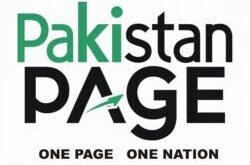Beyond Politics: The Untapped Power of Public Diplomacy in Iran–Pakistan Relations
By: Kainat Fatima
Public diplomacy has evolved from being a pleasant add-on to foreign policy to becoming an integral component. In contrast to classical diplomacy, which occurs behind closed doors, public diplomacy occurs in the open. It engages the public in fields such as culture, education, media, and common narratives. In today’s polarized world, it can foster trust, dispel myths, and create the foundation for long-term alliances.
As an international relations student, I have observed that building relations among nations such as Iran and Pakistan depends not only on state actions. It also depends on how well people in each country learn about one another. This is where public diplomacy comes in.
Rooted in Friendship, Striving for Fulfilment
Pakistan and Iran have more in common than just geography. We are linked by centuries of shared history, cultural heritage, religious beliefs, and linguistic connections. The relationship is strong, as proven by Persian poetry and related religious figures. Despite this strong basis, the relationship is usually stifled by mistrust, opposing interests, and external pressure.
Indeed, positive developments have already begun to appear.
Look at cultural exchange as an example. Iranian language courses in Pakistan’s universities are introduced to involve younger generations in Iran’s great literary tradition. Occasionally, Iranian cultural centers such as Khana-e-Farhang in Lahore and Islamabad organize art exhibitions, film shows, and seminars that introduce the softer aspects of the nation. I was fortunate enough to attend a cultural session at Khana-e-Farhang, which turned out to be richly insightful. Discussions and arguments awakened me to an aspect of Iran that has never been discussed in political discourse.
Education has also played an important influence. Every year, many Pakistani academics receive scholarships to study in Iran, primarily in medical, religious studies, and science. Some of these returnees have more fair and informed views of Iranian society. These exchanges are essential. They not only facilitate the exchange of knowledge, but also foster long-term understanding.
Social media has developed as an informal, new platform for public diplomacy. Diplomatic representatives of the two nations have occasionally shared friendly sentiments or words of encouragement on social media sites such as Twitter, especially during times of crisis, such as earthquakes or political unrest. These seemingly simple gestures have a huge impact on softening public perceptions.
But public diplomacy is not without its problems. The long-awaited Iran-Pakistan gas pipeline project is a key area of controversy. Iran has kept its promises, while Pakistan, under pressure from US sanctions, has held back from moving forward. This has caused discontent and contributed to the idea that Pakistan cannot always operate independently in its foreign policy.
Another issue is the negative image of Iran in some of the Pakistani media, usually driven either by sectarian differences or by geopolitical competition. For the average Pakistani, these pictures have a greater impact on sentiments than policies. Similarly, Iran’s expanding trade and energy cooperation with India has concerns Islamabad, making it difficult to establish trust.
Pakistan’s geopolitical proximity to Saudi Arabia and Iran’s tense relations with the Gulf States have forced Islamabad to stay on a fine line. Maintaining these relations in the face of regional diplomacy is a tricky one, particularly when extra-regional powers attempt to advance their interests.
Building a Better Future
If the two countries seek to renew their relationship and achieve their full potential, they must prioritize people-centered diplomacy. Here are some practical suggestions.
- Increased Youth and Educational Exchanges: We need to go beyond a few scholarships. We need student exchange programs, research collaborations, and youth-innovation initiatives in which young people lead diplomacy.
- Enabling Trade That Matters to Lives: Cross-border cooperation and trade, tourism, and collaboration among small businesses, particularly in border provinces, can make diplomacy practical. When families benefit from such collaboration, they have an interest in peace.
- Shift the Narrative: To combat disinformation and sectarian narratives, governments, media, and influencers from both sides must work together. Narrating stories of collaboration, solidarity, and cultural similarity through the media has the power to shift public attitudes.
- Diversify Religious and Cultural Tourism: While Pakistanis commonly visit Iran for pilgrimages, there are opportunities to diversify their experiences. Cultural celebrations, food festivals, and collaborative artistic residencies can offer possibilities for more people to experience one another cultures.
- Bridging Stereotypes: Open debate between individuals is the solution. People-to-people forums, student debates, or online platforms that offer direct communication between Pakistanis and Iranians can help bridge the gap of stereotypes and establish empathy.
A Relationship worth Investing In
Public diplomacy can’t replace high-level policy decisions. But it can establish a climate for excellent policy. It’s less about getting coalitions built, more about building empathy.
Both Iran and Pakistan have sound reasons behind their success in this endeavor. As neighboring Muslim states, we have common aspirations and common concerns. If we put the interest of our people above political considerations, then we can begin a new chapter not only on consensus, but on mutual understanding.

